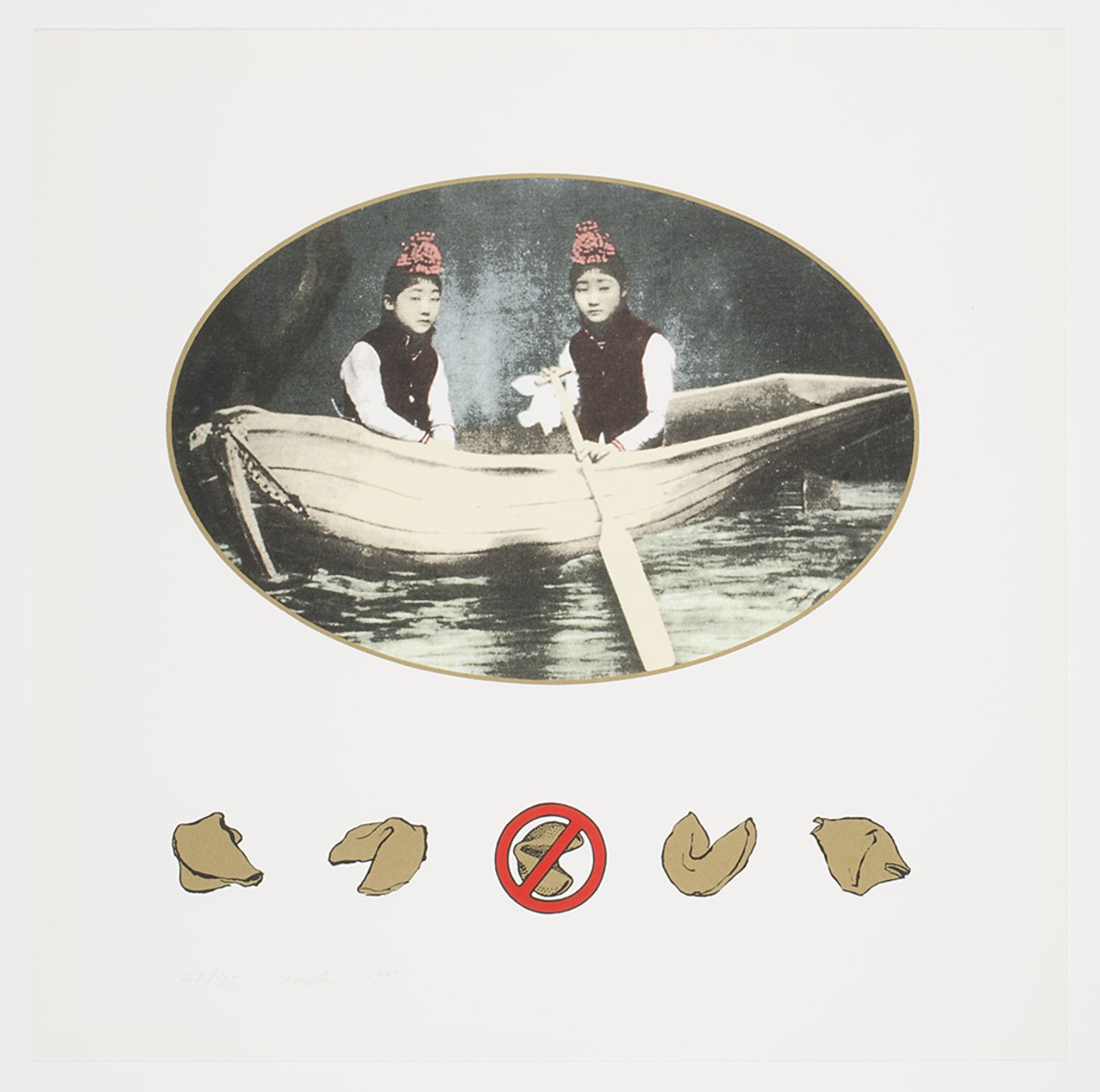
Miss Fortune
In this print, the Chinese-American artist Hung Liu presents an altered and manipulated early 20thcentury photograph of two Chinese child prostitutes. The young girls wear Western attire to appeal to a Euro-American clientele. Below the photograph are hand-drawn images of five fortune cookies. The universal symbol for “no” covers the middle cookie. The significance of the fortune cookies beneath the girls is threefold. The “fortune” in fortune cookies alludes to the promise of freedom and financial success that drew Chinese immigrants to the United States since the Gold Rush. Although Chinese immigrants came in search of a better life, they met with overwhelming discrimination and challenges. Men worked low-wage and perilous jobs, such as construction of the transcontinental railroad. Women often found themselves forced into sex work as the most viable means of survival in their new country. The fortune cookie also functions as a symbol of flawed American notions of Chinese culture. Fortune cookies are synonymous in the U.S. with Chinese tradition. Their origin, however, began not in China, but in Japan. A Japanese tea garden near the Golden Gate Bridge in San Francisco served the first fortune cookies to diners in the 1880s. “Fortune cookie,” moreover, was a slang term used for a Chinese prostitute in America during that time. When paired with the photographic image of young Chinese sex workers groomed for Western consumption, these images illuminate misfortunes experienced by Chinese immigrant women and a complex history of orientalism, marginalization, and sexualization that impacted them.
Exhibitions:
Hung Liu, Chinese, born 1948
Miss Fortune, 1995
Print | Screen print on paper
Gift of the Women’s Studies Program WSU


